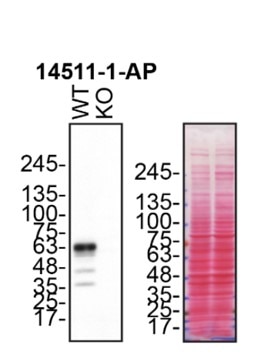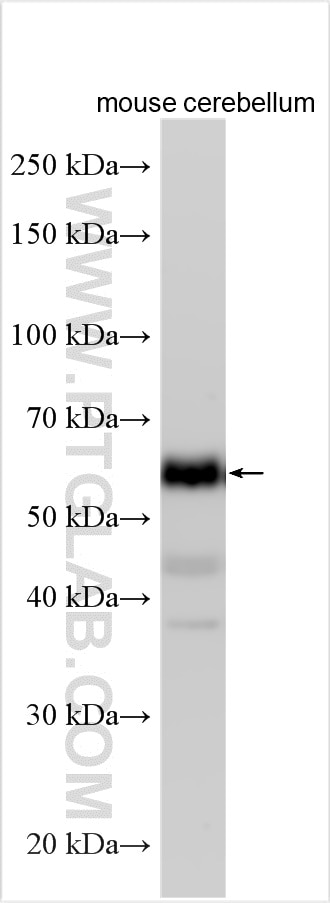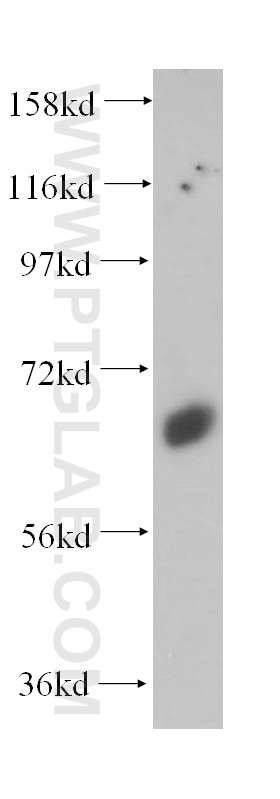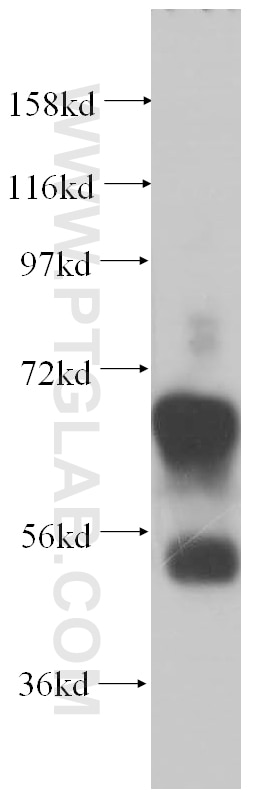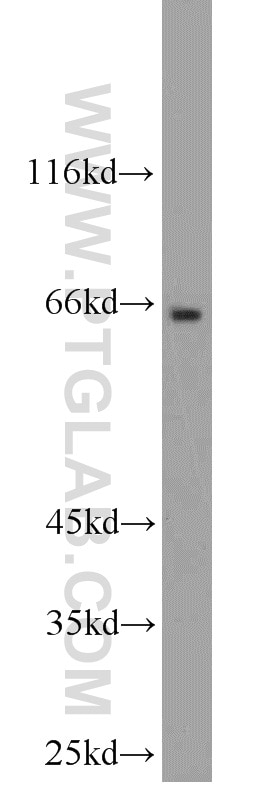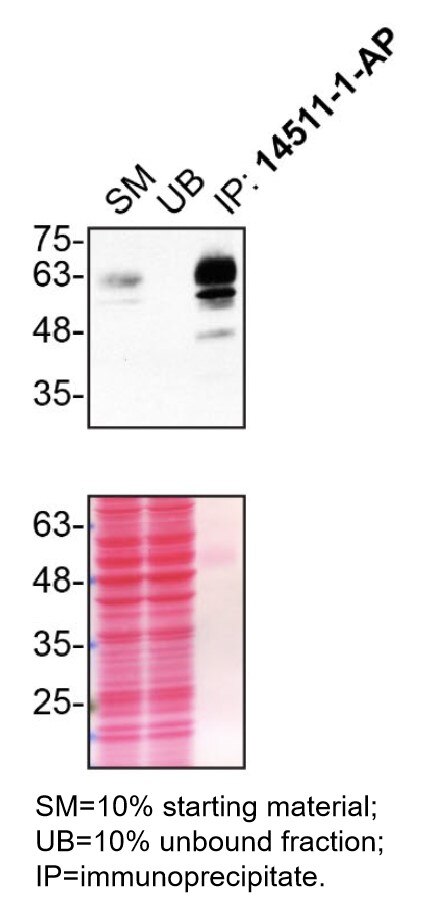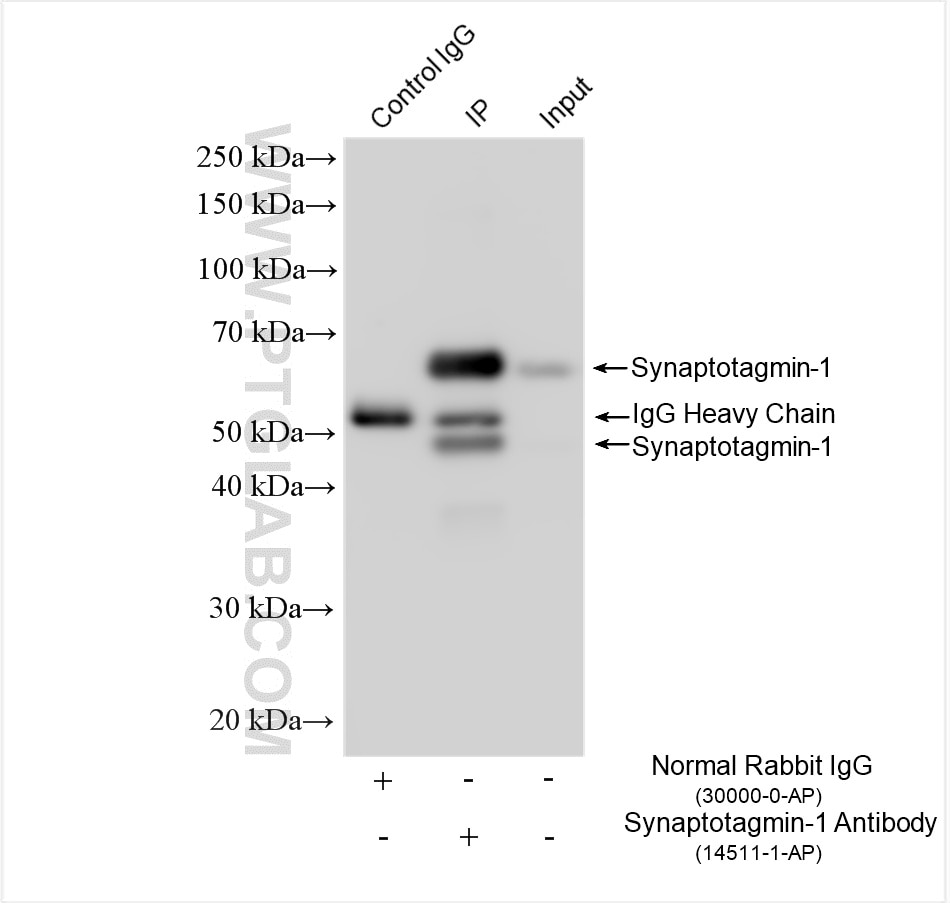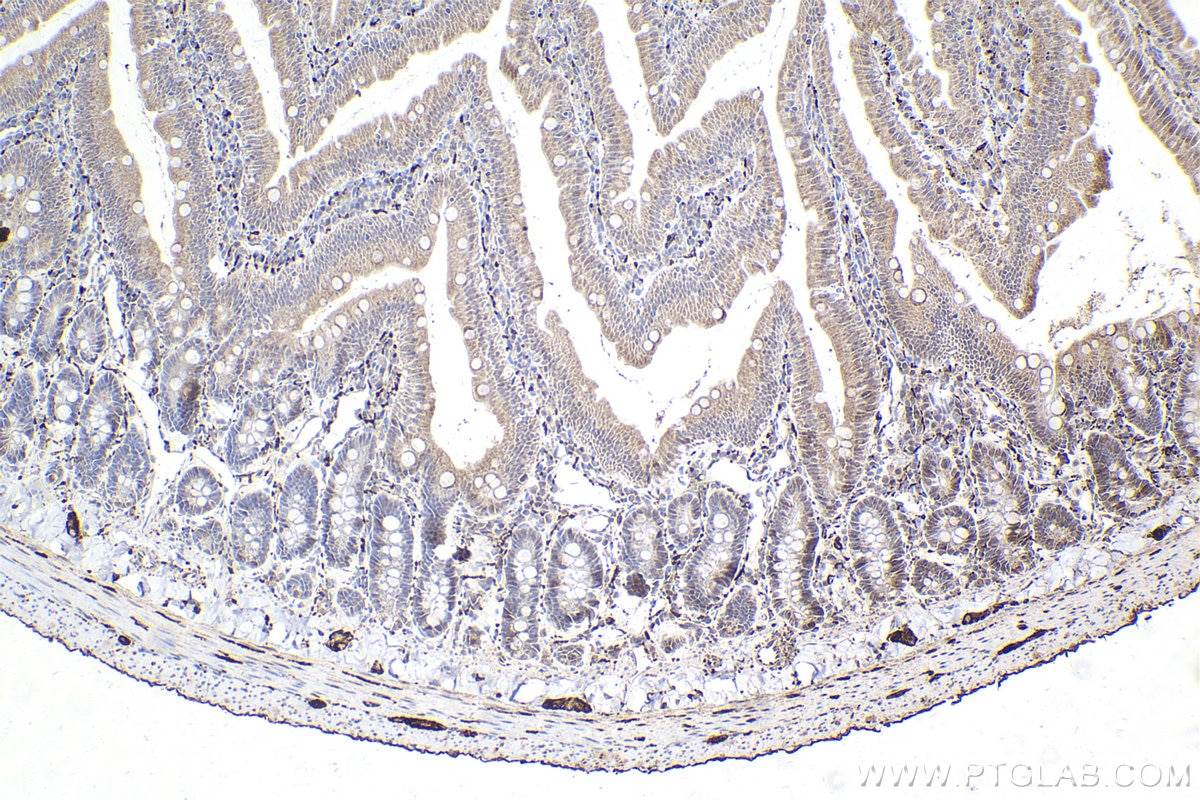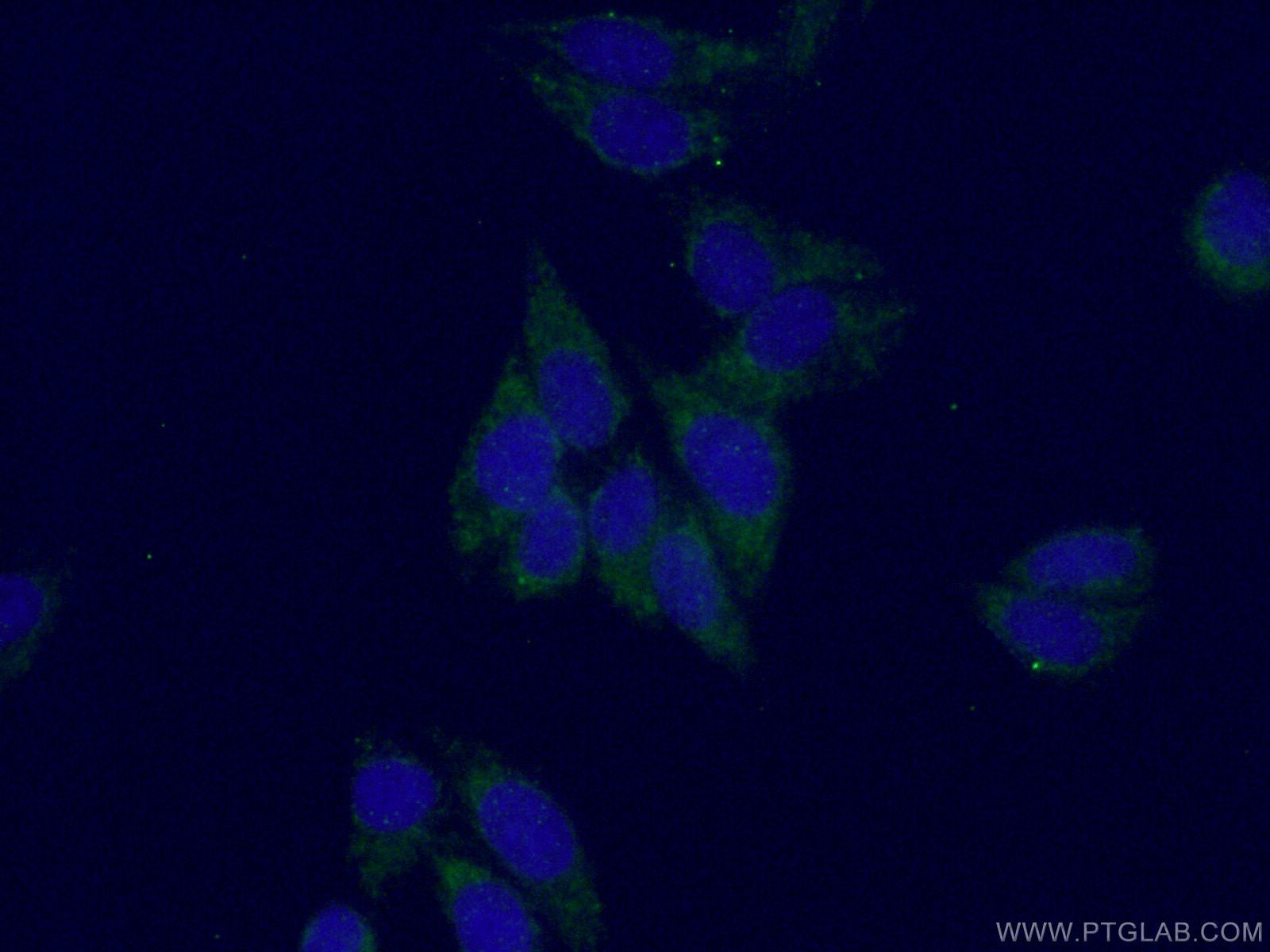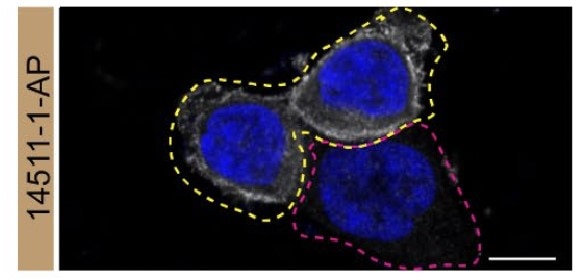- Phare
- Validé par KD/KO
Anticorps Polyclonal de lapin anti-Synaptotagmin-1
Synaptotagmin-1 Polyclonal Antibody for WB, IHC, IF/ICC, IP, ELISA
Hôte / Isotype
Lapin / IgG
Réactivité testée
Humain, souris et plus (1)
Applications
WB, IHC, IF/ICC, IP, ELISA
Conjugaison
Non conjugué
N° de cat : 14511-1-AP
Synonymes
Galerie de données de validation
Applications testées
| Résultats positifs en WB | tissu de cervelet de souris, cellules HCT 116, cellules Y79, tissu hépatique humain, tissu testiculaire de souris |
| Résultats positifs en IP | tissu de cervelet de souris, cellules HCT 116 |
| Résultats positifs en IHC | tissu d'intestin grêle de rat, il est suggéré de démasquer l'antigène avec un tampon de TE buffer pH 9.0; (*) À défaut, 'le démasquage de l'antigène peut être 'effectué avec un tampon citrate pH 6,0. |
| Résultats positifs en IF/ICC | cellules HepG2, cellules HCT 116 |
Dilution recommandée
| Application | Dilution |
|---|---|
| Western Blot (WB) | WB : 1:4000-1:20000 |
| Immunoprécipitation (IP) | IP : 0.5-4.0 ug for 1.0-3.0 mg of total protein lysate |
| Immunohistochimie (IHC) | IHC : 1:500-1:2000 |
| Immunofluorescence (IF)/ICC | IF/ICC : 1:50-1:500 |
| It is recommended that this reagent should be titrated in each testing system to obtain optimal results. | |
| Sample-dependent, check data in validation data gallery | |
Applications publiées
| KD/KO | See 1 publications below |
| WB | See 17 publications below |
| IHC | See 3 publications below |
| IF | See 5 publications below |
| IP | See 1 publications below |
Informations sur le produit
14511-1-AP cible Synaptotagmin-1 dans les applications de WB, IHC, IF/ICC, IP, ELISA et montre une réactivité avec des échantillons Humain, souris
| Réactivité | Humain, souris |
| Réactivité citée | rat, Humain, souris |
| Hôte / Isotype | Lapin / IgG |
| Clonalité | Polyclonal |
| Type | Anticorps |
| Immunogène | Synaptotagmin-1 Protéine recombinante Ag5970 |
| Nom complet | synaptotagmin I |
| Masse moléculaire calculée | 48 kDa |
| Poids moléculaire observé | 65 kDa, 47 kDa |
| Numéro d’acquisition GenBank | BC058917 |
| Symbole du gène | Synaptotagmin-1 |
| Identification du gène (NCBI) | 6857 |
| Conjugaison | Non conjugué |
| Forme | Liquide |
| Méthode de purification | Purification par affinité contre l'antigène |
| Tampon de stockage | PBS with 0.02% sodium azide and 50% glycerol |
| Conditions de stockage | Stocker à -20°C. Stable pendant un an après l'expédition. L'aliquotage n'est pas nécessaire pour le stockage à -20oC Les 20ul contiennent 0,1% de BSA. |
Informations générales
The synaptotagmins are integral membrane proteins of synaptic vesicles thought to serve as Ca(2+) sensors in the process of vesicular trafficking and exocytosis (PMID: 8058779). SYT1 (synaptotagmin I) was firstly identified as a 65-kDa protein with a wide distribution in neuronal and neurosecretory tissue (PMID: 7298720). Calcium binding to SYT1 participates in triggering neurotransmitter release at the synapse (PMID: 11242035). In addition to regulating exocytosis, SYT1 has also been implicated in endocytosis and neurite outgrowth (PMID: 15492212; 11078930; 10336114). This antibody recognizes endogenous SYT1, which has an experimentally determined molecular mass of 65-68 kDa. An additional band of 47 kDa could also be detected, which is corresponding to the calculated molecular weight of SYT1.
Protocole
| Product Specific Protocols | |
|---|---|
| WB protocol for Synaptotagmin-1 antibody 14511-1-AP | Download protocol |
| IHC protocol for Synaptotagmin-1 antibody 14511-1-AP | Download protocol |
| IF protocol for Synaptotagmin-1 antibody 14511-1-AP | Download protocol |
| IP protocol for Synaptotagmin-1 antibody 14511-1-AP | Download protocol |
| Standard Protocols | |
|---|---|
| Click here to view our Standard Protocols |
Publications
| Species | Application | Title |
|---|---|---|
Cell Rep The complement inhibitor CD59 is required for GABAergic synaptic transmission in the dentate gyrus | ||
Theranostics ANKRD22, a novel tumor microenvironment-induced mitochondrial protein promotes metabolic reprogramming of colorectal cancer cells. | ||
Front Mol Neurosci A Stimulation Function of Synaptotagmin-1 in Ternary SNARE Complex Formation Dependent on Munc18 and Munc13. | ||
J Psychiatr Res Early life stress enhances the susceptibility to depression and interferes with neuroplasticity in the hippocampus of adolescent mice via regulating miR-34c-5p/SYT1 axis | ||
Biochim Biophys Acta Mol Cell Biol Lipids Hepatic Synaptotagmin 1 is involved in the remodelling of liver plasma- membrane lipid composition and gene expression in male Apoe-deficient mice consuming a Western diet. | ||
J Proteomics Quantitative proteomics reveals olfactory input-dependent alterations in the mouse olfactory bulb proteome. |
